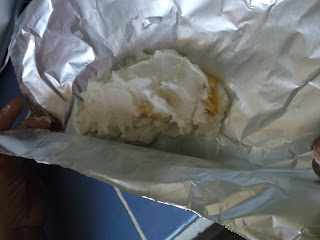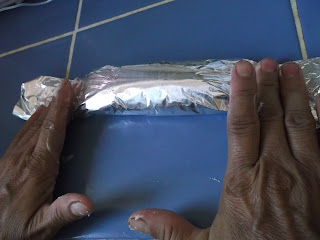 |
| Philippine Mango Float is graham cracker crumbs with mango slices soaked in condensed milk and |
In this South Pacific archipelago, in a country that has the fourth longest coastline in the world, diving experiences and contact with exotic marine creatures and plants are plentiful...
On the beach, a salesperson calls out shrilly, "Same, same....but different!" The inexpensive purses she was selling were really Gucci, weren't they? Or do you think they might not have been the genuine article? She was offering such a good deal! In the Philippines, this phrase means that the person is selling knockoffs.
A perfect dessert for hot weather is the Philippine Mango Float. You can opt for the refrigerator version or the frozen version. The national fruit is the mango, and this particular treat is believed to be the country's favorite as well.
The most recent Philippine holiday took place this Monday, August 27th-National Heroes' Day, which marks the beginning of the Revolution against Spain, the country's ruler for over 300 years. It is celebrated with parades, on the fourth monday of every year.
On the beach, a salesperson calls out shrilly, "Same, same....but different!" The inexpensive purses she was selling were really Gucci, weren't they? Or do you think they might not have been the genuine article? She was offering such a good deal! In the Philippines, this phrase means that the person is selling knockoffs.
A perfect dessert for hot weather is the Philippine Mango Float. You can opt for the refrigerator version or the frozen version. The national fruit is the mango, and this particular treat is believed to be the country's favorite as well.
The most recent Philippine holiday took place this Monday, August 27th-National Heroes' Day, which marks the beginning of the Revolution against Spain, the country's ruler for over 300 years. It is celebrated with parades, on the fourth monday of every year.
200 grams graham cracker crumbs
10 1/2 ounces Nestle cream, or whipping cream
3 mangoes, peeled and sliced
10 ounces condensed milk
Mix mangoes, cream, and condensed milk. Make a graham cracker layer, then place a cream layer, then another graham cracker layer, and another cream layer. Lastly, put another layer of crumbs on top. Place it in the refrigerator or in the freezer, depending on whether you prefer the refrigerator or frozen version. Both are delicious! If the weather is hot, choose the frozen option...
 |
| Philippine mango float--graham crackers, condensed milk, mango slices! |
References

















































